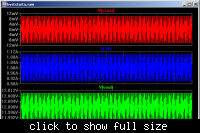helenpenghan
Newbie level 4
Hello,
I am trying to build a hysteresis control for very high frequency DC-DC converter. However, one drawback of hystersis comparator is the variable switching frequency with different outputs. I need a fix switching frequency for the whole system to ensure certain bandwidth. Is there any analog solution for a fixed switching frequency hysteresis control? Thank you.
I am trying to build a hysteresis control for very high frequency DC-DC converter. However, one drawback of hystersis comparator is the variable switching frequency with different outputs. I need a fix switching frequency for the whole system to ensure certain bandwidth. Is there any analog solution for a fixed switching frequency hysteresis control? Thank you.


